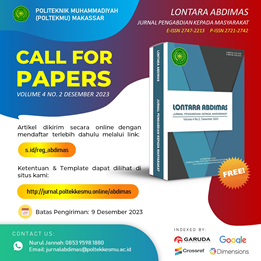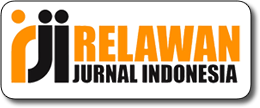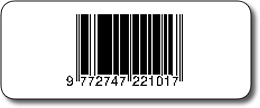Pemeriksaan Golongan Darah pada Pelajar Sekolah Islam Terpadu (SIT) Madrasah Tsanawiyah (MTs) Tahfidzul Qur’an Azhar Center Kota Makassar
Abstract
The rapid development of technology in this century also affects human health, with the demand for blood for humans increasing. The need for an efficient, fast and precise blood supply is one of the reasons that the blood donated is in accordance with the patient's blood. Therefore, the benefits of blood type examination such as being able to speed up identification for blood transfusion activities, selection of appropriate donors, and analysis of forensic cases. Clinical aspects that can be caused if there is an inappropriate donor selection can cause an immunological transfusion reaction, for example a blood group system that is not compatible with the patient. The implementation of this service is expected to produce outcomes such as the development of knowledge and understanding of the types of blood groups at the school level. The targets for this service are all students in grades 7, 8, 9 at the Integrated Islamic School (SIT) Madrasah Tsanawiyah (MTs) Tahfidzul Qur'an Azhar Center Makassar. The stages of service implementation consist of requesting permission, coordination between the Muhammadiyah Makassar Health Polytechnic and students and preparation of all facilities and infrastructure. The implementation of the activity consisted of checking blood types with a total of 55 students in grades 7, 8, 9 with an age distribution of 11 to 15 years. Based on the blood type examination, the results showed that from 55 participants with details of 21 men and 34 women, the blood types were A+, B+, AB+, O+ with a total of 15, 6, 5 and 29 participants, respectively. Thus it can be concluded that there are 27.27% of participants with blood type A, 10.9% blood type B, 9.09% blood group AB, and 52.73% blood group 0.
References
Alrasyid. 2010. Golongan Darah. Dibaca pada http://forum.upi.edu.com
Australia Red Cross. 2008. Blood Groups, 8 April 2010. Dibaca pada http://www.Bloodservice.com
Fitri. 2007. Manfaat Mengetahui Golongan Darah. 8 April 2010. [Online] http://www.wikimu.com (Diakses 20 April 2018).
Guyton, Arthur C., 1997. Buku Ajar Fisiologi Kedokteran. Edisi V. EGC. Jakarta
Kementerian Kesehatan Republik Indonesia. 2015. Profil Kesehatan Indonesia Tahun 2015. Tersedia pada http://www.depkes.go.id/resources/download/pusdatin/profil-kesehatan-indonesia/profil-kesehatan-Indonesia-2015.pdf. Diakses pada 1 Oktober 2018.
Suminar, S.R. 2011. Analisis Hukum Terhadap Pemberian Transfusi Darah Di Rumah Sakit Berdasarkan Undang-Undang No. 44 Tahun 2009 Tentang Rumah Sakit. Jurnal FH.UNISBA. XIII(3).
Sasmita. 2008. Pengenalan Golongan Darah. FT UI. Jakarta.











